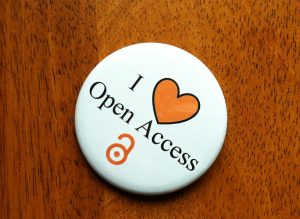 Joshua Dierolf (www.joshuadierolf.com) is a PhD candidate at Western University studying the influence of metabolism on stem cell pluripotency and early development.
Joshua Dierolf (www.joshuadierolf.com) is a PhD candidate at Western University studying the influence of metabolism on stem cell pluripotency and early development.
It is hard to evade the incessant bombardment of social media pseudoscience. Like most things in life, if it sounds too good to be true, it probably is. But how can the public separate fact from fiction? Moreover, why is it so hard to access helpful resources? Here I present our primary suspect: “the paywall.”
Getting caught behind a paywall happens when you attempt to view content requiring a fee. If you aren’t sure what a paywall is, then look no further than a newspaper’s online content, typically charging a small upfront fee for access. The concept of charging for content isn’t necessarily a bad model, especially from a business standpoint in a world transitioning away from paper print. The problem lies with the availability of scientific advancement, often funded by taxpayer dollars.
As of 2008, all research projects funded by the Canadian Institutes of Health Research (CIHR) are required to have subsequent publications open source or available for institutional or central archiving.
The CIHR rationalizes this decision, stating: “CIHR believes that greater access to research publications and data will promote the ability of researchers in Canada and abroad to use and build on the knowledge needed to address significant health challenges.”
This directive is a step in the right direction and the Natural Sciences and Engineering Research Council and the Social Sciences and Humanities Research Council of Canada have since followed suit.
The good news continues. In January, the Canadian Medical Association Journal (CMAJ) announced it will be moving forward as an open access publication. This transition covers the latest publications, and older content will be available this March. By moving towards open access, the CMAJ aims to draw the attention of policy makers, patients and the public to encourage consumption of their quality health science content.
Will this change be useful?
Reading dense research papers can be akin to decoding hieroglyphics. By design, most scientists tend to be as technical and succinct as possible, avoiding unnecessary hyperbole in an attempt to prevent extrapolation and misunderstanding in their findings. Unfortunately, this way of writing, combined with seemingly gibberish vernacular and obscure molecular level experiments coded in statistical jargon so sophisticated that Alan Turing would be proud, and it is no wonder that most people are intimidated and avoid reading them.
Lord Ernest Rutherford once said, “An alleged scientific discovery has no merit unless it can be explained to a barmaid.” Despite lacking the foresight that a surprising amount of PhDs rely on said employment today, Rutherford made an important point.
You may be asking yourself, how can a research article inform the public? I highly recommend checking out the CMAJ’s Collections as it provides an intuitive way to view content.
For example, let’s look at the sensitive but relevant topic of opioids. From the beginning of 2016 until March 2019, there was an estimated 12,800 deaths in Canada attributed to opioid overdose. Luckily, opioid prescriptions are declining, but the public needs quality resources of current findings. Using CMAJ’s website, anyone, regardless of affiliation, can discover the latest publications of their choosing from a select list of topics (such as “Pain (Including opioids)”).
The best and perhaps most important part of this journal is that the abstract is broken into four critical components: Background, Methods, Results and Interpretation. This section has been simplified to give readers of all scientific literacy the ability to understand what question the work seeks to answer, how the research was conducted, the main findings and why they are important. Using this resource, you might discover that chronic pain and mental disorders are co-occurring in the Canadian Armed forces. This open knowledge may inform our forces to seek help more readily.
The CMAJ has designed a user friendly interface to make their publications easier to navigate and understand. With more information at our fingertips than ever before, public access to peer-reviewed science has never been more valuable.
It can be difficult to tell the difference between good and bad science, especially if you don’t have a technical background. CMAJ is now one more reliable source.
With a powerful tool now at your disposal, will you open your mind to the world of open access?
Guest
Latest posts by Guest (see all)
- Regenerative immunotherapy: Hope for chronic autoimmune diseases - September 16, 2025
- Canada’s regenerative revolution: Why AI is the catalyst - September 4, 2025
- Summer by Design: A launchpad for future entrepreneurs and industry scientists - August 14, 2025






Comments